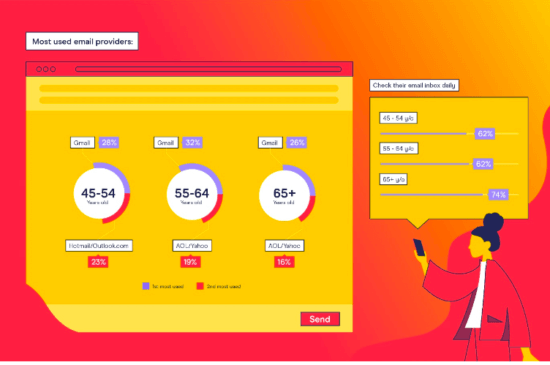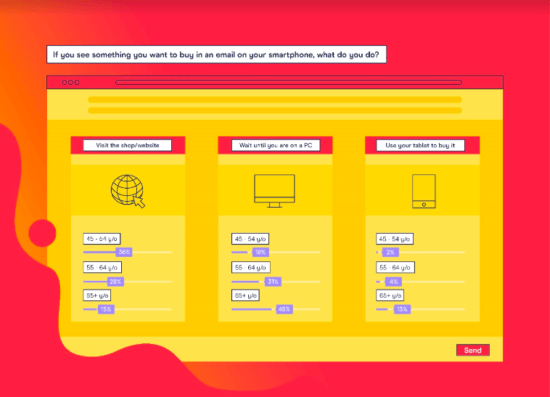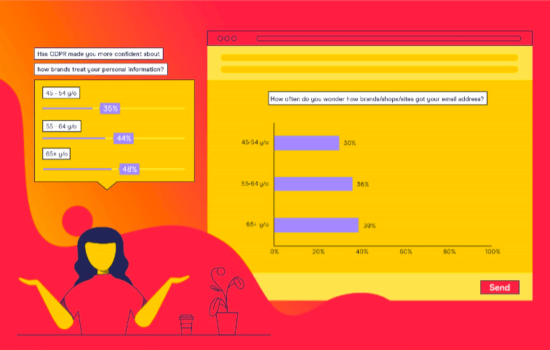Insights from the Data & Marketing Association’s head of insight, Tim Bond, reveals email attitudes and behaviours among demographics over 45 years old
The technological world that we live and work in continues to evolve, seemingly offering new ways to engage customers at every turn. But this excitement over what’s new should not distract marketers from the central channel that still resonates with consumers.
Whether they’re considering a purchase, have just made one or need some help, these latest figures highlight email’s ability to help brands engage across the customer journey.
The DMA’s ‘Consumer Email Tracker 2020’ research revealed that email remains a core channel to attract and engage customers throughout the entire customer journey.
It remains the preferred channel for consumers from pre- to post-purchase and for customer service enquiries.
This is in spite of findings from the DMA’s ‘Customer Engagement: Acquisition and the Consumer Mindset’ report, which found that social media had overtaken email for the first time among customers aged 18- to 24-years-old.
Our latest analysis and infographics reveal how different age groups respond to email marketing, with a focus on mature cohorts.

When it comes to checking their personal inbox, most customers across the 45-65+ cohort do so at least once a day.
Most of these customers use Gmail as their primary personal email address. When asked about the device they use most often to access their personal emails, in general, all these age groups prefer to use their computer, rather than their mobile.
Opposite results were found across younger cohorts, who prefer small screens (from mobile to smartwatches). There is a dramatic increase (73%) in desktop preference among those over 65 years old compared to younger cohort members - 61% (55-64yrs) and 48% (45-54yrs).

Customers’ device preference is also mirrored in the actions they undertake when receiving marketing emails from brands on their mobile.
Those aged 45-54, prefer more direct options, such as visiting the shop or the website (35%). On the other hand, customers aged 65+ would use a computer (45%) or tablet (13%) before undertaking any further steps.
The middle group, 55-64, is fairly split between the two options (28% computer – 31% tablet).

44% among those aged 55-64 and 48% of those over 65 years of age, declared that GDPR
didn’t make them more confident about how brands treat their personal information.
Furthermore, consumers aged 45+ are significantly more likely to report ‘Often’ wondering how brands got their email address, and this percentage increases with age.
The future for email is bright, but challenges remain
As an industry, we must address these key areas to retain email’s position as the central
thread around which a multi-channel experience can be built.
That means using the data available to us, to think strategically and ask “why?” a little more often, and a dash of creativity to execute campaigns that will fully engage. It’s in this mix that truly intelligent marketing is born.
In an era of mass personalization and technological innovation, we need to demonstrate that the data consumers share is used to serve them better.
An area of change that we may witness in the next few years could see businesses offering
recipients more control of their data and increased preference options – to help marketers
find a better balance of email sending frequency and relevance.
It is important to remember that responsible and innovative data use can build consumer
trust and a willingness to share insights – creating better opportunities for both the business and the customer.
Embedding this customer-centric mindset into organizational culture can help further cement email’s position as a powerful channel that belongs at the heart of brand communications.
View all the latest bitesize infographics Consumer Email Tracker 2020.
A social scientist by training and a communications professional by trade, Tim Bond now combines these two fields in his role within the DMA. He has an MA in Sociology from Aberdeen University and over the last decade, he has continued to utilise this social sciences background to develop research campaigns across a range of sectors. A key part of his role at the DMA is developing actionable insight for the data-driven marketing industry, which also supports the association’s core belief in putting the customer first and leading the business sector in creativity and innovation./div>









